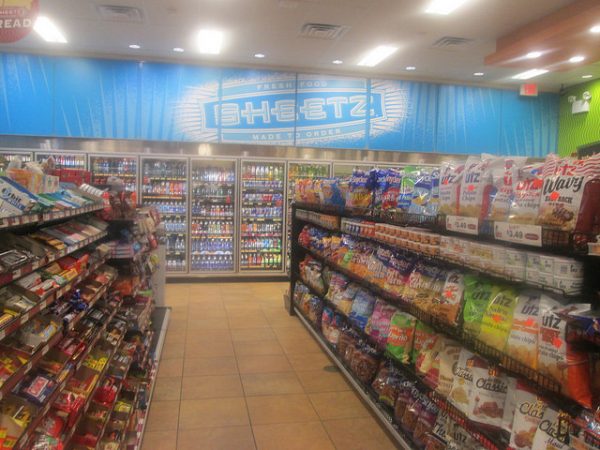Subsisting on Convenience Foods

Photo credit: Random Retail, CC BY 2.0.
A couple months ago, I got sick. Really sick. I won’t get into the details, but it was a scary time. I didn’t have the energy to meal plan, go grocery shopping, prepare meals or snacks ahead of time, or do dishes afterwards. It was too much. In fact, I still have a sink full of dishes from before I got sick. I made peace with it, and I’ll get to it when I am more able to deal with the more mundane and less pressing requirements of life. Out of kindness to myself, I decided that it would be okay to forego all of these activities in lieu of purchasing convenience foods.
It wasn’t always like this. I used to pack coffee, breakfast and lunch every day and batch-cook one pot meals for dinners and weekends. I’d budget $150 for groceries each month and, more often than not, I’d come in under. It wasn’t hard. I ate whatever simple, whole foods were on sale that week. I don’t drink alcohol, and I abstained from packaged food products as much as possible. I also gave myself only $100 each month to spend at restaurants — and stuck to it.
When life got a little hectic, or when I was trying to do too many things on a tight schedule, I’d fight tooth and nail to keep my food and dining expenses as low as possible. I’d scroll through my Mint app to check how much I’d “wasted” on food with regret and self-flagellation. My internal voice would say, “If only you’d use your pressure cooker to batch-cook dried beans to throw over a bed of spinach or kale and toss in a few cherry tomatoes, a week’s worth of healthy and robust lunches could be had for less than $1.50 a serving. Maybe even less than $1.”
Or she’d say, “If only you continued to make overnight oats and bring bananas and apples to work, you wouldn’t crash at lunchtime and get a $10 sandwich at the cafe around the corner from the office out of desperation.”
And, most austerely, she’d say, “You don’t need to go out to eat to have friends. You can go on walks, go for coffee, or visit each other’s homes.”
I don’t know why this voice insisted on shaming me for prioritizing convenience or pleasure over a bare-bones existence, but since I started putting my mental health first, the more pressing challenges of my life have become much more manageable. It has made all the difference to opt out of the paradigm of “real meals,” with a protein and two sides, and switch to grab-and-go items at convenience stores and cafés.
So what does my current diet look like?
- I spend about $20 a week on fresh fruit (bananas, grapefruit, oranges)
- $10 on granola and cereal bars (three or four packages)
- $6 on pita chips, hummus
- A serving of Huel every other day or so (at about $2 a serving)
- The rest is rounded out by sad convenience store sandwiches, expensive café sandwiches, and meals out with friends
My total food spending is about $300-$350 a month. Yes, I’m spending an extra $100 each month on food, but my stress levels have gone way down — so for now, it’s worth it. What else could I throw $100 at and solve a multitude of problems? Not a whole lot.
Michelle Song does things including writing, editing, and nurturing a Meyer lemon tree. She is an older Millennial unlikely to be found anywhere but her inbox at michellesong101@gmail.com.
This story is part of The Billfold’s Food Series.
Support The Billfold
The Billfold continues to exist thanks to support from our readers. Help us continue to do our work by making a monthly pledge on Patreon or a one-time-only contribution through PayPal.
Comments